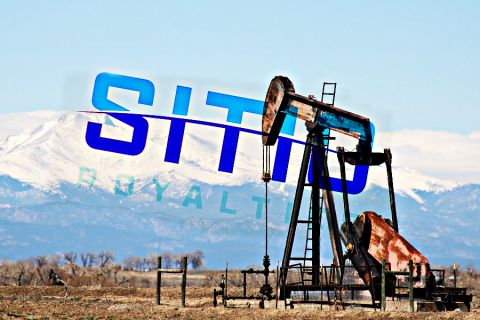Marty Searcy's Sawtooth Energy Partners is among the many E&P companies that have been formed this past year that are on the hunt for assets. With $50 million in funding from EnCap Investments and other sources, Searcy has been shopping for months but has yet to find a deal that fits Sawtooth's acquisition model. His commodity-price forecast may be lower than sellers' expectations, he says. He's heard the talk of a new North American gas-price floor, which some analysts are saying is about $3 per thousand cubic feet (Mcf). The idea is that gas production-decline rates are so high supply will begin to slip within six weeks of a wellhead price below $3. Producers cut back on drilling. Fewer wells are completed. New supply is not brought online to cover existing-well declines. Gas prices climb. Having been in the business for more than 20 years, the former Union Pacific Resources executive has heard it all before. Yet, sellers seem to believe in this new gas-price floor. "That's why there's such a disconnect," Searcy says of determining asset values. Gas prices will range from $2 to $5 during the next few years, he expects, but how much time is spent at either end of the price spectrum remains to be seen. At the A&D table, "sellers are expecting-and receiving in many cases-prices based on strip-type commodity-price decks," he says. That could be fine if buyers could get a strip-type price too-for forward production. David Bole, senior vice president at M&A advisory firm Randall & Dewey Inc., notes that the loss of many credit-worthy hedging counterparties has made acquisition financing more difficult. In the not-so-distant past, asset buyers could help secure the value of their acquisitions by financing a large part of the price through a forward sale of production. Apache Corp. is often noted by fellow producers as having managed some huge deals with this strategy. Today, however, it is more difficult for producers to execute off-Nymex transactions. Few are finding buyers beyond six months. Without a special, guaranteed revenue stream, financing an acquisition can be more expensive and less accessible. And there are fewer financiers. While private-equity firms have big money to place right now, several mezzanine capital providers have withdrawn from the business. (For more on the former, see "Capital and Lots of It," Oil and Gas Investor, July 2002. On the latter, see "Where Art Thou Mezzanine Financier," June 2002). For example, Shell Capital and Enron Energy Capital are closed. Mirant Americas Energy Capital, Aquila Energy Capital and Range Resources Producer Finance have suspended new deal-making. The few remaining include Duke Energy Capital, Wells Fargo Energy Capital and BlackRock Energy Capital. Meanwhile, for the most part, the market has not seen sufficient asset quality in size to satisfy buyers' need for growth opportunities, contributing to fewer deals, Bole says. "Few producers have been willing to sell good-quality properties, while trying to meet Wall Street's demands for production and reserve growth. When high-quality assets have entered the marketplace, buyers have bid very aggressively." Some producers are being creative. In a deal with GE Capital, Magnum Hunter Resources sold some noncore assets to help reduce its debt, but retained some potential profit. The properties, which came with Magnum Hunter's recent acquisition of Prize Energy, were rolled into a partnership with GE Capital. The latter has 95% ownership of the new company, while Magnum Hunter, general partner, has 5% and $50 million. Gary Evans, chairman, president and chief executive, says the deal takes advantage of the strength of the futures market. Translation: If Magnum Hunter can't get a strip-type price for the assets, it can keep a piece of them and reap proceeds from the spot price when the time comes. "There is a real disconnect in the market today with respect to the value of hard assets in the private energy sector versus public evaluations," Evans says. Also creative is not having to pay taxes on a divestment, boosting the net price received per BOE. "It's not talked about a lot, but yes, the seller walks away with far less, after taxes," says one oil-company A&D team member. For example, Devon Energy's $732 million of U.S. assets sales this year resulted in net proceeds of $546 after taxes-25% less. The proved reserves associated with the sales totaled 113 million barrels of oil equivalent (BOE). At $546 million, Devon realized $4.83 per BOE after taxes, compared with $6.48 on the gross. Yet, Marathon Oil received full value from the divestment of its East Texas assets, in a swap with XTO Energy. Marathon, fresh from acquiring CMS Oil and Gas' business in Equatorial Guinea, was eyeing CMS' Powder River Basin assets. XTO Energy bought them for $101 million and then traded them to Marathon for properties in East Texas. XTO Energy is preselling that and preexisting production through 2003-wrapping up 500 million cubic feet (MMcf) per day at an average $4.05 per Mcf during first-quarter 2003 and 50 MMcf per day for the following three quarters at an average of $4.10 per Mcf. Bill Marko, vice president and chief operating officer of A&D advisory firm OGJ Exchange, Madison Energy Advisors, says buyers are increasingly astute in identifying motivated sellers versus those that will sell only if the price is right. Buyers do not want to dedicate time looking at packages offered by sellers with unreasonably high price expectations. Credit-rating agencies' reports contain good clues as to who is motivated. Moody's Investors Service reported in May that it thought Unocal Corp.'s debt was too high compared with what the company needs to spend to sustain production growth. Soon after, Unocal announced it would lay off 200 employees in its Gulf of Mexico business unit and sell some onshore south Louisiana and offshore assets. The first properties up for sale are producing approximately 8,000 BOE per day. And credit-rating agencies' reports contain leads on prospective buyers. Encore Acquisition recently received a first-time rating a couple steps below investment-grade and won 8.37% financing of $150 million worth of 10-year notes. With the proceeds, it paid off its credit facility and opened a new account, at Fleet National Bank, with a $300-million limit-plenty of cash to do lots of deals. Moody's expects Encore will do deals under $50 million, although the producer has the credit capacity to make larger purchases. These under-$50-million offerings-what Marko calls bread-and-butter acquisitions-have been in short supply these last couple of quarters. In the first half, there were several $100-million-plus packages on the market, many of these offered by El Paso, Devon Energy and Burlington Resources, Marko says. These large deals represented more than 90% of total sales. "So there is tremendous competition for them, which is propping up the prices sellers are receiving," Marko says. According to a Randall & Dewey calculation, producers paid an average of $5.57 per BOE for U.S. reserves during the first half of 2002, compared with $5.44 during the first quarter and $6.85 during 2001. Research firm John S. Herold Inc., which uses different parameters in its determinations, reports that assets went for $6.05 per BOE in the first quarter and $6.30 in the second, compared with $4 to $6 during the past few years. "Meanwhile, we still haven't seen the megamajors and the large independents do a lot," Marko adds. That additional business will bode well for producing property brokers who are no fewer in number this year but are competing for fewer sales contracts. Searcy, who is among producers looking for under-$50-million packages on the asset-sale shelf, was seeing increased deal flow in July but still found it extremely competitive. "The deals out there are receiving a lot of interest." One onshore U.S. package received more than 100 requests for additional information. Searcy was not among them. Marko says OGJE/Madison has had 30 to 60 companies' representatives sign confidentiality agreements to review packages (per offer) so far this year, 20 to 35 physically attend the data-room presentation, and 12 to 25 submit bids. "All of these statistics are 50% to 100% better than they were a couple of years ago in a much different selling environment." Searcy is seeking reserves and production in southeast New Mexico and west Texas in the $20- to $30-million range. Sawtooth is also interested in the Midcontinent. But Chesapeake Energy is buying all of that. The Oklahoma City-based producer is betting on U.S. gas prices and winning the financing to pay for it. Four pending acquisitions-including Focus Energy, and Oklahoma gas assets from The Williams Cos., totaling $170 million-will be paid with part of the proceeds from $250 million of new senior notes. "Ours is a pretty simple story: Midcontinent gas," says Doug Jacobson, senior vice president, A&D. "We're bullish on gas." The company hedged a considerable amount of production in 2000 through 2002, guaranteeing prices that have provided tremendous cash flow and also resulted in improved credit ratings, thus reduced interest rates. It had hedged some 2003 production but that has been unwound. It now plans to expose most of its 2003 production to the spot market. Searcy is determined. "If one is persistent and patient, deals can get done. We are fortunate our investors have a long-term outlook...They would rather not do a deal than make a bad deal." For now, he's on the expensive side of the table. "Demand for properties is so high," Marko says. "Right now is a good time to sell. It's a seller's market."
Recommended Reading
Deep Well Services, CNX Launch JV AutoSep Technologies
2024-04-25 - AutoSep Technologies, a joint venture between Deep Well Services and CNX Resources, will provide automated conventional flowback operations to the oil and gas industry.
EQT Sees Clear Path to $5B in Potential Divestments
2024-04-24 - EQT Corp. executives said that an April deal with Equinor has been a catalyst for talks with potential buyers as the company looks to shed debt for its Equitrans Midstream acquisition.
Matador Hoards Dry Powder for Potential M&A, Adds Delaware Acreage
2024-04-24 - Delaware-focused E&P Matador Resources is growing oil production, expanding midstream capacity, keeping debt low and hunting for M&A opportunities.
TotalEnergies, Vanguard Renewables Form RNG JV in US
2024-04-24 - Total Energies and Vanguard Renewable’s equally owned joint venture initially aims to advance 10 RNG projects into construction during the next 12 months.
Sitio Royalties Dives Deeper in D-J with $150MM Acquisition
2024-02-29 - Sitio Royalties is deepening its roots in the D-J Basin with a $150 million acquisition—citing regulatory certainty over future development activity in Colorado.





